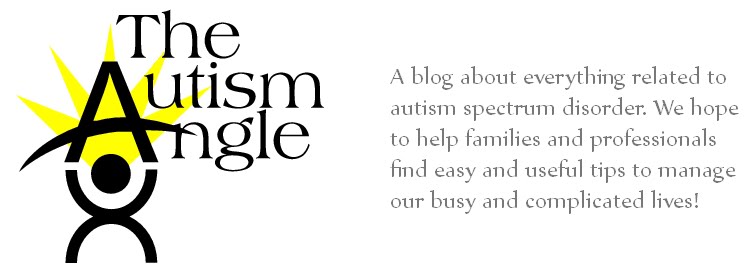Similar to her book "Asperger's What Does It Mean to Me?" this book by Catherine Faherty is a great resource for individuals with autism and Asperger's and their communication partners. The focus of this book is to help clarify miscommunication that inevitably happens in life, especially between people with two different communication styles. With her work with individuals of all ages, Catherine found that it is just as important that we, "neurotypicals", adjust the way that we communicate and get our point across. She sets up a contract consisting of five agreements-- one set for the person with autism and a set for the neurotypical communication partner. These contracts can be used between parent and child, teacher and student, spouses, colleagues etc. I love how Catherine encourages us to take a look at ourselves and not always assume that the communication breakdown is a result of communication difficulties for the person with autism; we need to remember that it takes two to communicate and we all can learn how to communicate more effectively.
The five agreements she details for the neurotypical communicator are:
#2 "Speak literally and concretely. Avoid hinting and indirectness. Say what you mean, and mean what you say. Less "chat" is better."
#3 "Provide information. Do not assume that the person "knows" what you think "everyone knows."
#4 "Help your communication partner's self-expression. Provide tools: paper, pen, computer keyboard, and/or Communication Forms to facilitate authentic communication."
#5 "Realize that the autistic style of communicating is different from-- not inferior nor superior to-- the widespread, familiar communication style that you and most neurotypical communicators expect."
The five agreements she sets up for the person with ASD are:
#1 " I will try to express myself to my communication partner."
#2 " I will try to ask for help when I need it. Another term for asking for help is self-advocacy. Sometimes I will try to offer help to my communication partner, too."
#3 " I will try to say "thank you" or write "thank you notes" when someone has helped me, or given me something."
#4 "My communication partner may have different thoughts, ideas, and opinions from mine. This is natural. A first step in understanding him or her better, is to ask about his or her thoughts, ideas, and opinions."
#5 "I realize that my natural communication style is in some ways different from- not inferior not superior to-- the more widespread and neurotypical style of communicating."
Catherine then goes on to explain each agreement thoroughly as well as to provide activities and communication forms to assist in the process (for example, ideas for people with ASD of how to ask for help). Also included in the book is a CD so you can print out the worksheets yourself! This book is relatively new to me, but it's one that I've used with some with my older, more self- aware clients and it has been a great tool in starting a conversation and using concrete strategies to help each of us understand the other's perspective. I would absolutely encourage parents, teachers, employers etc to try it out! I will say that in order for these strategies to work, you have to stick with them, be patient, and remember that it may take a while to go through the entire workbook and to understand all of its components. If you take the time, however, it'll be well worth it in the end!
_____________________________________________________________________
Death and illness are extremely sensitive and difficult topics to broach with any child, and due to the abstract nature of the subject, it can be especially hard for individuals with ASD to wrap their heads around. In this book Catherine Faherty clearly explains terms associated with death and illness, feelings that may be associated with them, as well as different associated beliefs and practices. Again, she provides checklists to help individuals decide for themselves what is true or false for them in regards to their thoughts and beliefs as well as an opportunity to write and ask any questions they may have.
The book is broken up into the following chapters:
- Illness and Injury
- Recuperating and Healing
- Death and Dying: Who, What, When, Where, and How..
- When Someone is Dying
- Communication
- What Happens to the Person Who Dies
- Putting Pets To Sleep
- Rituals and Traditions
- Taking Care of the Physical Body
- What People Say and Do
- Taking Care of the Soul: More Rituals and Traditions
- Continuing a Relationship
- People's Reactions after Someone Dies
- More Names for Emotions
- What Does it Mean If Someone Says....
- What People May Learn About Life When Facing Death
- Being Inspired: Role Models and Mentors
This is a great resource for parents and therapists. It is important to assess where the person is in regards to his/her understanding and the questions he/she may have and then you can take different sections of the book and go through a little bit at a time. I think it's a fabulous resource, not only for individuals with autism, but anyone who is struggling to understand what all of it means. The last chapter of her book is also dedicated to additional resources that families may be interested in contacting to help during these difficult times.
- Molly



I was diagnosed as HEPATITIS B carrier in 2013 with fibrosis of the
ReplyDeleteliver already present. I started on antiviral medications which
reduced the viral load initially. After a couple of years the virus
became resistant. I started on HEPATITIS B Herbal treatment from
ULTIMATE LIFE CLINIC (www.ultimatelifeclinic.com) in March, 2020. Their
treatment totally reversed the virus. I did another blood test after
the 6 months long treatment and tested negative to the virus. Amazing
treatment! This treatment is a breakthrough for all HBV carriers.